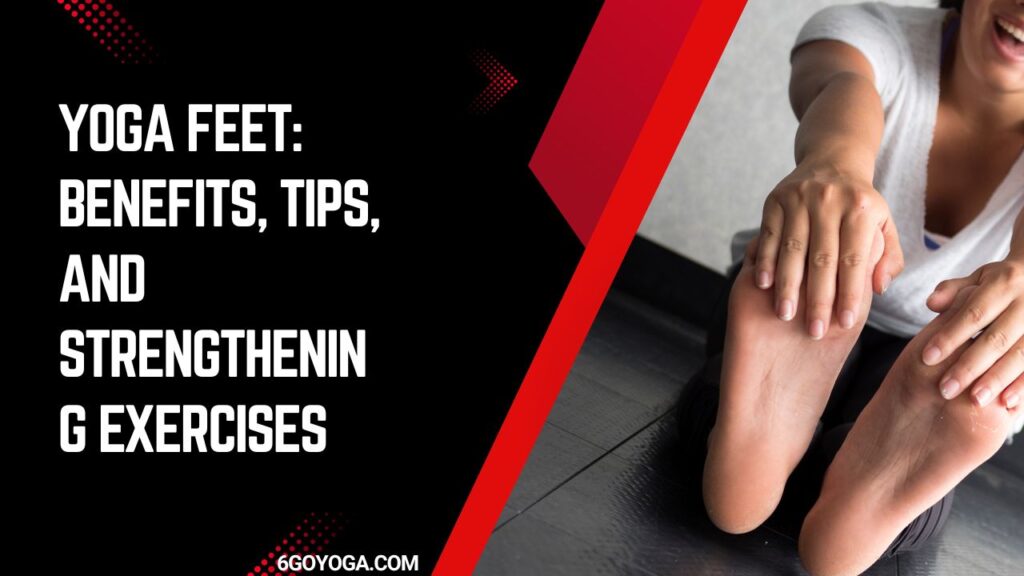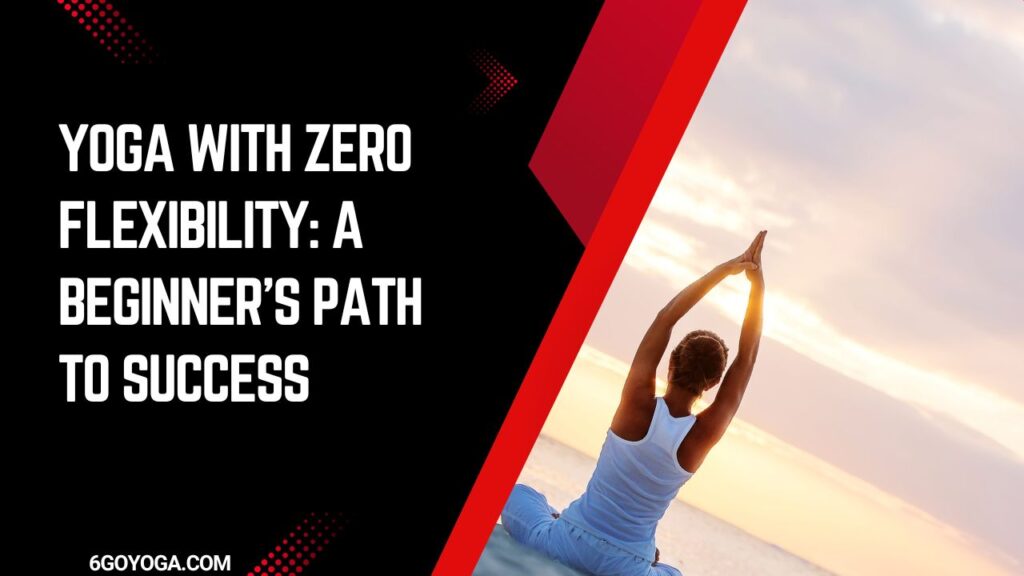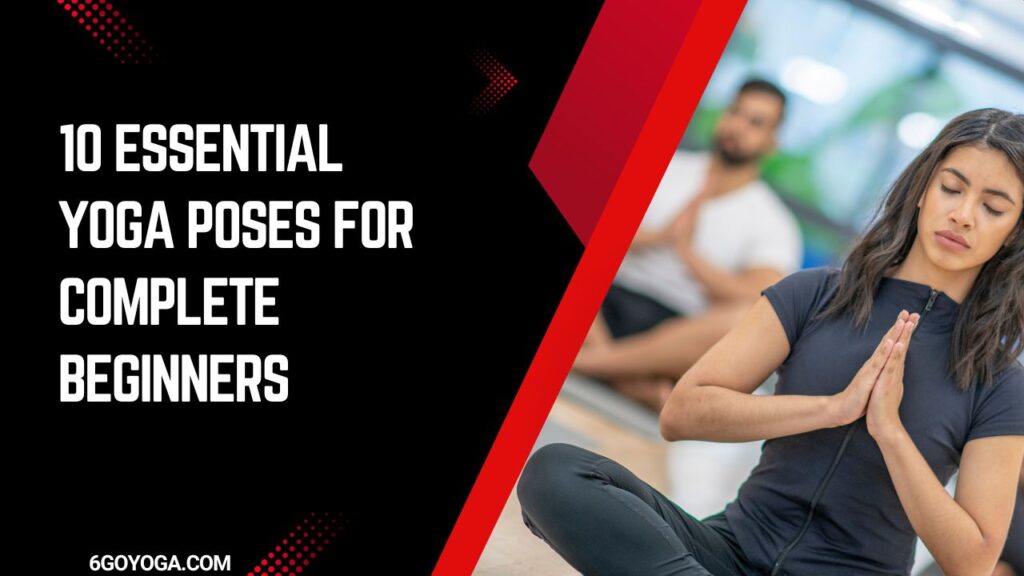Yoga feet refer to the concept of cultivating strength, flexibility, and awareness in the feet through yoga practice. The feet serve as the foundation of most yoga poses, and their condition significantly impacts balance and alignment. In yoga, activating and spreading the toes, lifting the arches, and evenly distributing weight are emphasized to create stability and improve posture.
In this post, we explore the concept of yoga feet, focusing on proper alignment, engagement, and balance. Discover how mindful attention to your feet can enhance stability, improve posture, and deepen your overall yoga practice.
Key Characteristics of Yoga Feet
| Aspect | Description |
|---|---|
| Activation | Engaging muscles and creating stability |
| Alignment | Proper distribution of weight |
| Flexibility | Ability to adapt to different poses |
Yoga feet are crucial not just for yoga poses but also for everyday activities like walking and standing.
Quote: “Strong feet build the foundation for a steady yoga practice.” – Yoga Instructor
Importance of Foot Strength in Yoga
Foot strength and flexibility are vital in yoga because they support the body in various poses, enhance stability, and prevent injuries. A firm connection to the ground through the feet helps maintain alignment and improves transitions between poses.
Benefits of Foot Strength in Yoga
| Benefit | Impact |
|---|---|
| Improved Balance | Stabilizes the body in challenging poses |
| Enhanced Posture | Supports proper spinal alignment |
| Injury Prevention | Reduces strain on knees and ankles |
Strong feet allow practitioners to explore more advanced poses with confidence.
Quote: “Yoga begins from the ground up, and the feet are where it all starts.” – Experienced Yogi
Benefits of Strong Yoga Feet
Improved Balance and Posture
Strong yoga feet directly enhance balance and posture, which are essential for achieving stability in various poses. Activating the feet engages the arches and distributes weight evenly, reducing the risk of overloading other parts of the body, such as the knees and hips.
Effects on Balance and Posture
| Aspect | Benefit |
|---|---|
| Engaged Arches | Creates a stable foundation |
| Even Weight Distribution | Prevents wobbling in standing poses |
| Aligned Posture | Supports the spine and reduces strain |
These improvements are particularly noticeable in poses like Tadasana (Mountain Pose) and Vrksasana (Tree Pose).
Quote: “Balance is not just about standing still; it’s about grounding through your feet.” – Yoga Practitioner
Enhanced Mobility and Flexibility
Yoga feet exercises improve the range of motion in the toes, arches, and ankles, making transitions between poses smoother. Enhanced flexibility also reduces the likelihood of cramps or stiffness.
Mobility and Flexibility Benefits
| Area | Effect |
|---|---|
| Toes | Improved grip and control |
| Arches | Greater adaptability to uneven surfaces |
| Ankles | Increased range of motion |
Flexible feet not only improve yoga performance but also benefit activities like running and walking.
Quote: “Flexible feet make every step, on and off the mat, lighter and freer.” – Fitness Expert
Common Foot Problems in Yoga
Overpronation and Supination
Overpronation (rolling the feet inward) and supination (rolling the feet outward) are common issues that can affect balance and alignment during yoga. These problems often stem from weak arches or improper weight distribution.
Causes and Effects of Foot Imbalances
| Condition | Cause | Impact |
|---|---|---|
| Overpronation | Weak arches | Strain on knees and hips |
| Supination | Tight or rigid arches | Reduced stability and ankle injuries |
Practicing yoga with awareness of foot alignment can help address these imbalances over time.
Arch and Heel Pain
Arch and heel pain, often caused by conditions like plantar fasciitis, can hinder yoga practice. Strengthening the feet and using props like yoga blocks can alleviate discomfort.
Tips to Reduce Foot Pain
| Method | Benefit |
|---|---|
| Foot Stretches | Loosens tight arches and heels |
| Yoga Props | Provides support and reduces pressure |
| Warm-Up Exercises | Prepares feet for yoga poses |
Addressing foot pain improves comfort and enables practitioners to focus fully on their yoga practice.
Quote: “Pain-free feet are the foundation of a mindful yoga journey.” – Yoga Therapist
Exercises to Strengthen Yoga Feet
Toe Spreading and Lifting
Toe exercises are a simple yet effective way to build strength and flexibility in the feet. Spreading and lifting the toes enhances muscle engagement and improves balance.
Steps for Toe Spreading and Lifting
| Step | Action |
|---|---|
| Step 1 | Sit comfortably with feet flat on the floor |
| Step 2 | Spread toes as wide as possible |
| Step 3 | Lift each toe individually, starting with the big toe |
Performing these exercises daily strengthens the intrinsic foot muscles, supporting better alignment in yoga poses.
Quote: “Strong toes make for a strong foundation in every pose.” – Yoga Instructor
Arch-Strengthening Drills
Strengthening the arches is crucial for stability and preventing overpronation. Simple drills like arch lifts and towel scrunches target these areas.
Arch-Strengthening Exercises
| Exercise | Focus Area |
|---|---|
| Arch Lifts | Builds height and stability in the arches |
| Towel Scrunches | Strengthens the muscles of the midfoot |
These exercises not only improve yoga performance but also reduce the risk of foot pain.
Quote: “Healthy arches support a healthier, more balanced practice.” – Fitness Expert
Foot Alignment in Popular Yoga Poses
Tadasana (Mountain Pose)
In Tadasana, proper foot alignment is key to achieving balance and creating a solid foundation. Activating the toes, lifting the arches, and grounding through all four corners of the feet ensure stability.
Alignment Tips for Tadasana
| Aspect | Instruction |
|---|---|
| Weight Distribution | Evenly across the heels and balls of the feet |
| Toe Activation | Spread and engage the toes |
| Arch Engagement | Lift arches without collapsing |
Proper alignment in Tadasana enhances overall posture and prepares the body for more complex poses.
Warrior Poses
In Warrior I and II, foot alignment determines balance and stability. Proper placement of the back foot and grounding through the front foot are critical for success.
Alignment Tips for Warrior Poses
| Pose | Instruction |
|---|---|
| Warrior I | Back foot at a 45-degree angle, front foot grounded |
| Warrior II | Front foot aligned with the center of the back arch |
Attention to alignment prevents strain and improves the flow of energy in these poses.
Quote: “In Warrior Poses, your feet ground you while your spirit reaches upward.” – Yoga Teacher
Tips for Caring for Your Feet
Best Practices for Foot Health
Caring for your feet is essential for sustaining a strong yoga practice. Regular foot stretches, massages, and proper hygiene keep the feet healthy and pain-free.
Foot Care Practices
| Practice | Benefit |
|---|---|
| Foot Massages | Relieves tension and improves circulation |
| Stretching | Maintains flexibility and reduces stiffness |
| Hydration | Prevents dry, cracked skin |
Adopting these practices helps maintain the health and strength of yoga feet.
Footwear Recommendations
The right footwear can prevent foot pain and support overall alignment. Choose shoes that provide adequate arch support and allow the toes to move freely.
Features of Ideal Footwear
| Feature | Benefit |
|---|---|
| Arch Support | Reduces strain on the feet |
| Wide Toe Box | Allows natural toe movement |
| Cushioning | Provides comfort and shock absorption |
Caring for your feet off the mat ensures they remain strong and healthy on the mat.
Quote: “Happy feet lead to a more grounded yoga practice.” – Yoga Enthusiast
Using Props to Support Yoga Feet
Blocks and Straps for Balance
Yoga props like blocks and straps are valuable tools for enhancing balance and foot engagement. Blocks can be placed under the heels or hands to adjust alignment, while straps help stretch and strengthen the feet.
How to Use Props for Foot Support
| Prop | Usage | Benefit |
|---|---|---|
| Block | Under heels in poses like Downward Dog | Improves alignment and reduces strain |
| Strap | Around the foot in seated forward folds | Enhances flexibility and muscle engagement |
Using props allows practitioners to safely build strength and flexibility in their feet.
Quote: “Props bridge the gap between where you are and where you aim to be.” – Yoga Instructor
Cushions for Foot Comfort
Cushions provide additional support for the feet during seated poses or meditative practices. They help reduce pressure on the heels and arches, ensuring a more comfortable practice.
Benefits of Cushions
| Feature | Impact |
|---|---|
| Soft Support | Reduces strain on feet during long holds |
| Postural Aid | Encourages proper alignment |
Incorporating cushions is particularly helpful for practitioners with foot sensitivity or pain.
Quote: “Comfortable feet create space for deeper mindfulness.” – Yoga Practitioner
Yoga Poses for Foot Strength and Flexibility
Downward Dog
Downward Dog is a foundational pose that stretches and strengthens the feet while promoting balance. It engages the arches, elongates the Achilles tendon, and opens the toes.
Benefits for Feet
| Aspect | Focus |
|---|---|
| Stretch | Lengthens the soles and arches |
| Strength | Builds endurance in the feet and ankles |
Regular practice of Downward Dog improves overall foot health and alignment.
Garland Pose
Garland Pose, or Malasana, is a deep squat that enhances foot flexibility and strengthens the arches.
How to Practice Garland Pose for Foot Health
| Step | Action |
|---|---|
| Step 1 | Squat with feet flat on the floor |
| Step 2 | Press palms together in front of the chest |
| Step 3 | Shift weight evenly across the feet |
This pose improves mobility and prepares the feet for advanced yoga poses.
Quote: “Grounded in Garland Pose, the feet find strength and freedom.” – Yoga Practitioner
Foot Reflexology and Yoga
Linking Foot Reflex Points to Wellness
Foot reflexology complements yoga by targeting specific points on the feet that correspond to various parts of the body. This practice promotes relaxation and enhances overall wellness.
Common Reflex Points
| Reflex Point | Linked Body Area |
|---|---|
| Arch | Digestive organs |
| Heel | Lower back and legs |
| Toes | Head and neck |
Incorporating reflexology techniques into yoga practice enhances its holistic benefits.
Simple Reflexology Techniques
Simple techniques like foot massages or applying pressure to reflex points can be integrated into yoga sessions for added benefits.
Easy Reflexology Tips
| Technique | Benefit |
|---|---|
| Circular Pressure | Relieves tension in specific areas |
| Rolling Foot on a Ball | Improves circulation and flexibility |
Reflexology and yoga together create a comprehensive approach to foot health and overall well-being.
Quote: “Through reflexology, we realize the feet are a map to the body.” – Reflexology Expert
Yoga Feet for Everyday Life
Applying Yoga Foot Principles Off the Mat
The benefits of yoga feet extend beyond the mat, improving posture, balance, and overall mobility in daily activities. By engaging the arches and distributing weight evenly, individuals can prevent foot fatigue and discomfort during long hours of standing or walking.
Everyday Applications
| Scenario | Yoga Principle | Impact |
|---|---|---|
| Standing in Line | Engage arches and spread toes | Reduces strain on heels and knees |
| Walking | Distribute weight evenly across feet | Improves gait and prevents imbalances |
Applying these principles ensures healthy feet and better alignment in everyday life.
Quote: “Yoga doesn’t end on the mat; its lessons walk with us.” – Yoga Practitioner
Benefits for Runners and Walkers
Yoga feet exercises are particularly beneficial for runners and walkers, as they strengthen the muscles that support the arches and ankles. This reduces the risk of injuries such as plantar fasciitis and shin splints.
Benefits for Active Individuals
| Benefit | Description |
|---|---|
| Enhanced Endurance | Stronger feet improve running efficiency |
| Reduced Injuries | Better support for high-impact activities |
Runners and walkers who incorporate yoga feet techniques often notice improved performance and reduced discomfort.
Quote: “Strong feet take you further, on trails and in life.” – Runner and Yoga Enthusiast
Conclusion
Recap of Key Benefits
Strong yoga feet are the foundation of a balanced practice and a healthy lifestyle. From improving balance and posture to preventing common foot issues, the advantages of cultivating yoga feet are undeniable.
Key Takeaways
| Aspect | Benefit |
|---|---|
| Strength | Builds core and overall stability |
| Flexibility | Increases range of motion |
| Foot Health | Reduces pain and enhances mobility |
By focusing on yoga feet, practitioners can unlock their full potential on and off the mat.
Quote: “Happy feet are the root of a joyful yoga journey.” – Yoga Teacher
FAQs
- What are yoga feet, and why are they important?
Yoga feet refer to the principles of engaging and strengthening the feet during yoga practice, which improves balance and alignment. - Can yoga improve foot strength and flexibility?
Yes, specific yoga exercises and poses enhance both strength and flexibility in the feet. - What are the best yoga poses for foot health?
Poses like Tadasana (Mountain Pose), Garland Pose, and Downward Dog are excellent for foot health. - How do props help with foot alignment in yoga?
Props like blocks and straps support proper alignment and reduce strain, making poses more accessible. - Can yoga prevent common foot problems?
Yes, practicing yoga feet exercises can prevent issues like arch pain, overpronation, and plantar fasciitis. - How often should I practice yoga feet exercises?
Aim to include foot exercises 2–3 times a week for optimal benefits.


